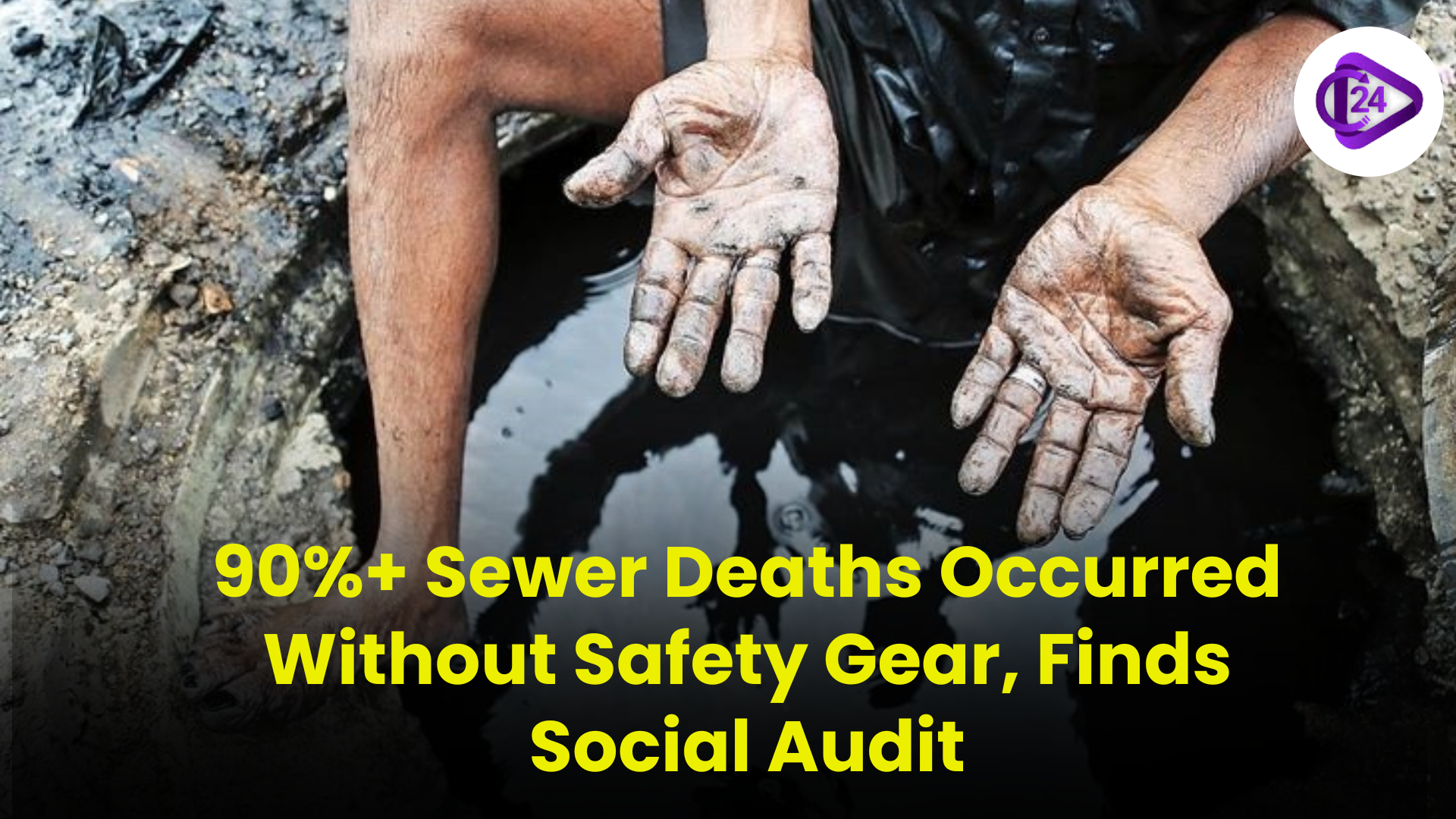
A recent social audit by the Ministry of Social Justice showed that the deaths of sewer and septic tank workers in 2022-23 were more than 90 per cent without any safety equipment. Among 54 cases analyzed, there was no protective gear in 49 workers the consent was not even obtained in 27 cases. There was virtually no mechanization and training. There were only 7 districts that carried out awareness drives after the deaths. In reply, the government has initiated the NAMASTE scheme.
Context
-
The report is received amid the claim that the ministry kills the practice of manual scavenging in India.
-
Nevertheless, cleaning of sewers and septic tanks is still a hazardous task, causing the deaths of workers.
-
The question raised by Congress MP Praniti Shinde in the Parliament raised the issue, prompting the government to provide an answer over the audit results.
Main Recommendations of the Social Audit (2022- 2023)
Lack of Safety Equipment
-
In 49 deaths out of 54, there was no safety equipment.
-
In 5 cases there were no gumboots; 1 case involved gloves and gumboots.
-
In 47 incidents, there was no mechanized equipment.
-
Equipment was provided at only 2 instances, and training was provided in 1 instance.
The case lacks Informed Consent
-
In 27 cases of 54 deaths, there was no written consent.
-
No risk counselling was carried out in 18 cases, which involved obtaining written consent.
Labor & Organization Structure
-
38 fatalities: Workers were contracted alone.
-
5 fatalities: The government officials hired workers.
-
3 fatalities: Public servants who work in employment contracted by the private sector to carry out a particular job.
Awareness and Response at District Level
-
Partial awareness drives were only created due to 7 deaths.
-
Districts: Chennai, Kancheepuram(Tamil Nadu), Satara(Maharashtra).
Equipment Preparedness & Agency Preparedness
-
Agencies were unprepared and ill equipped in 45 deaths.
-
The audit highlighted misconduct of agencies in respect to safety procedures.
National Data on Sewer Deaths
|
Year |
Reported Deaths |
|
2022 |
Not specified |
|
2023 |
Not specified |
|
Total (2022–2023) |
150 deaths |
NAMASTE Scheme
-
The Ministry of Social Justice is to launch it in July 2023.
-
Goal: To deal with hazardous cleaning of septic tanks and sewers
-
Coverage:
-
36 States/UTs had 84,902 workers in them.
-
More than 50 per cent have been provided with PPE kits and protective gears
-
NAMASTE: National action for mechanized sanitation ecosystem
Legal and Policy History
-
Employment of Manual Scavengers and construction of dry latrines (Prohibition) Act, 1993
-
The Prohibition of Employment as Manual Scavengers and their Rehabilitation Act, 2013
-
Nevertheless, dangerous cleaning is one of the major grey areas that tend to be taken advantage of by non-public cleaning firms.
Conclusion
Even though manual scavenging is punishable by law, dangerous access to the sewer is done under unhygienic and unlawful circumstances. The results of the investigation indicate a failure of the system in applying safety norms, mechanization, and legal responsibility. Practical implementation of programs such as NAMASTE and improved punishment to those who break the laws are necessary in protecting sanitation workers.



 India Achieves 20% Ethanol Blending in Petrol — 5 Years Ahead of Target
India Achieves 20% Ethanol Blending in Petrol — 5 Years Ahead of Target Aadi Thiruvathirai 2025: Honouring Rajendra Chola I
Aadi Thiruvathirai 2025: Honouring Rajendra Chola I MiG-21 Fighter Jets to Retire in September 2025
MiG-21 Fighter Jets to Retire in September 2025 Indian Army Inducts First Batch of Apache AH-64E Helicopters
Indian Army Inducts First Batch of Apache AH-64E Helicopters Parliament Passes ‘Bills of Lading, 2025’ to Modernize Maritime Trade Law
Parliament Passes ‘Bills of Lading, 2025’ to Modernize Maritime Trade Law Vice-President Jagdeep Dhankhar Resigns Citing Health Reasons
Vice-President Jagdeep Dhankhar Resigns Citing Health Reasons Tamil Nadu Police to Launch e-Sakshya App for Digital Evidence Collection
Tamil Nadu Police to Launch e-Sakshya App for Digital Evidence Collection Indian Army’s AI Roadmap by 2026-27: From Drone Swarms to Smart War Rooms
Indian Army’s AI Roadmap by 2026-27: From Drone Swarms to Smart War Rooms Fauja Singh, World’s Oldest Marathoner, Cremated with State Honours
Fauja Singh, World’s Oldest Marathoner, Cremated with State Honours






